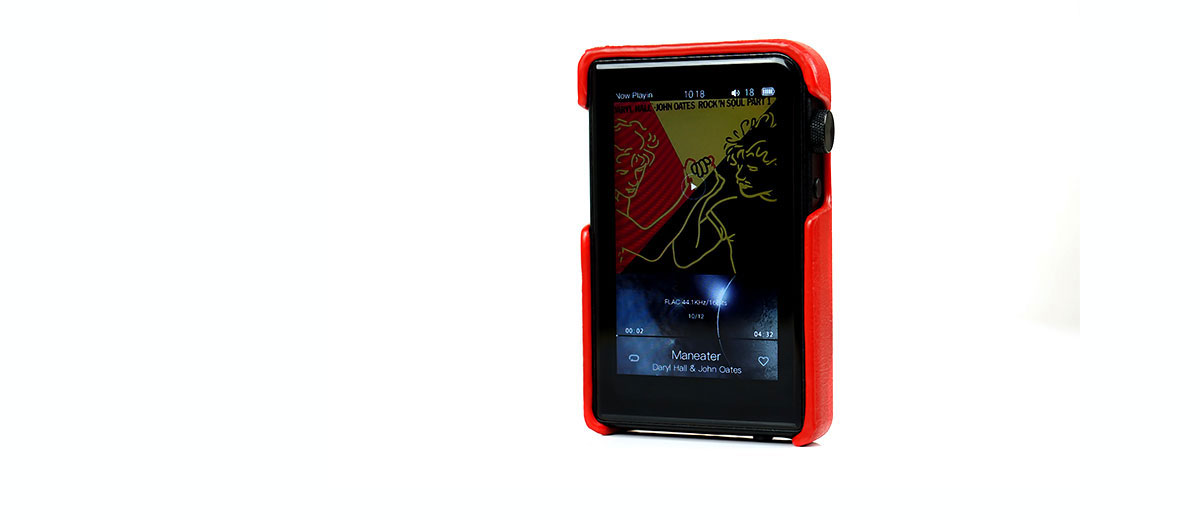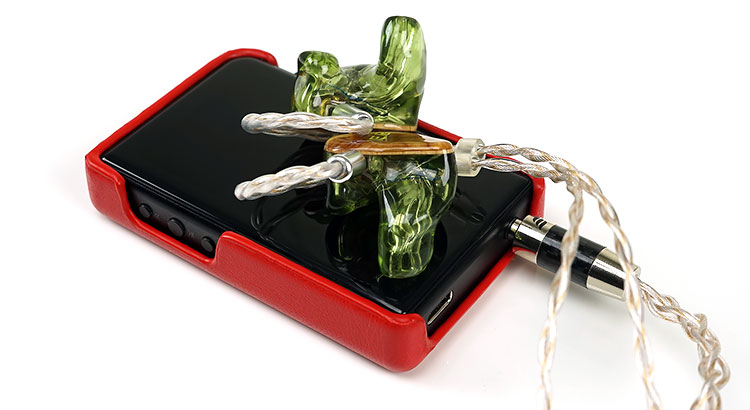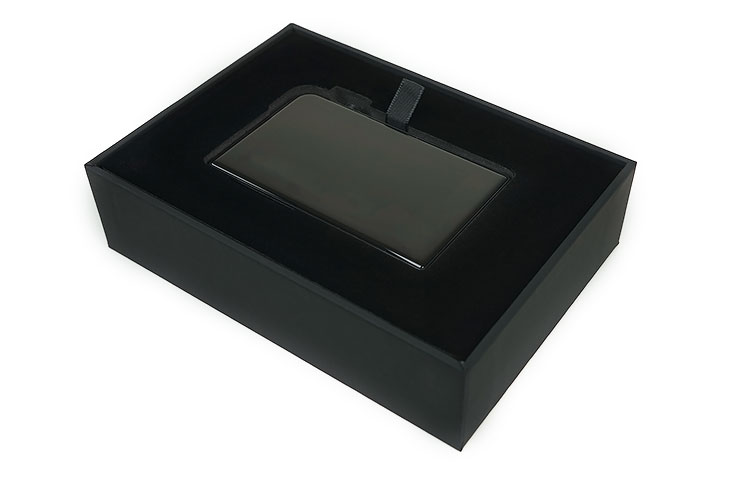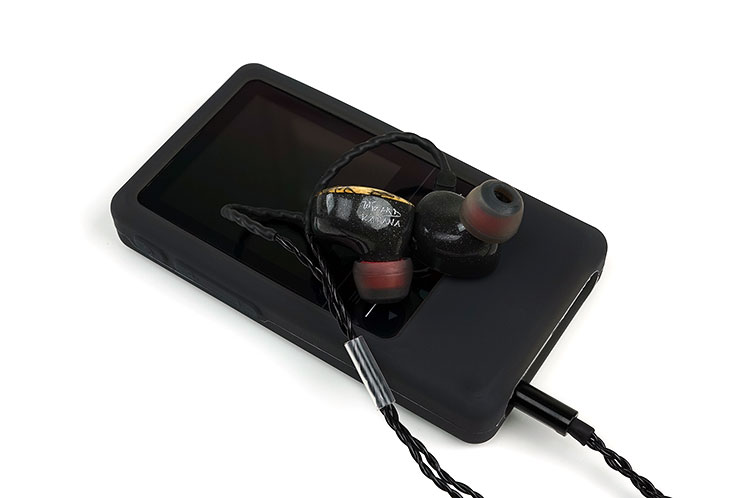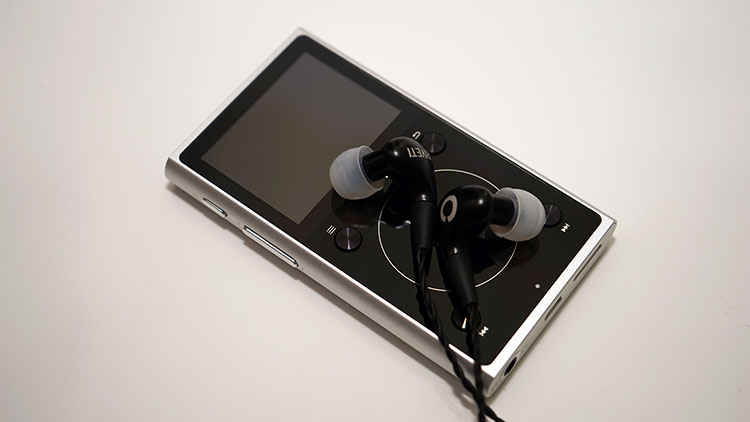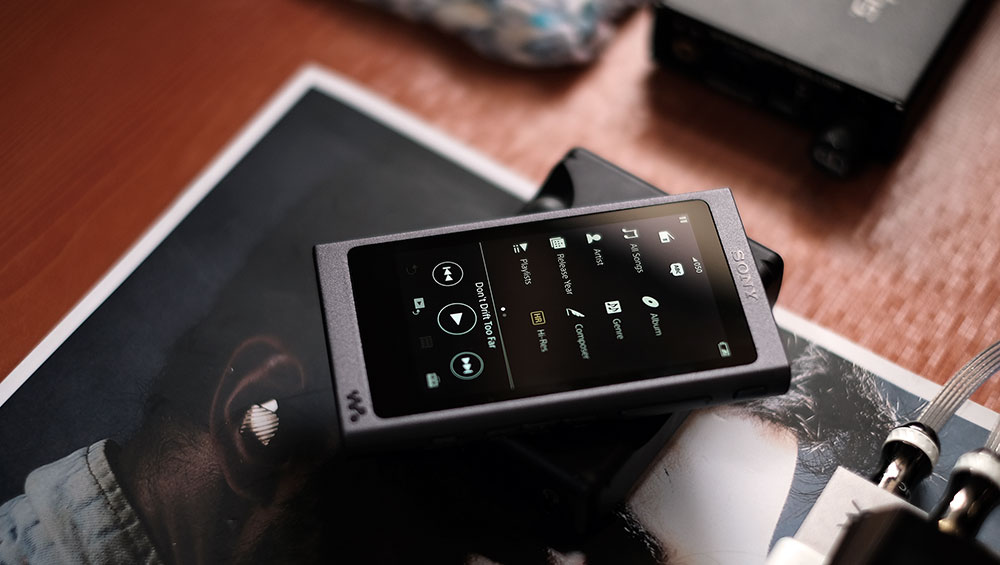Sound Impressions
Summary
The tonality of the M2s is quite different from the likes of the N3 from Cayin and FiiO’s X1 2nd Gen. Despite its use of similar DAC and output power ratings to the N3, I would consider this paper match-up a slight red herring in real-world terms due to the output impedance.
It is possible the 4.8-ohm output rating is coloring the low end of my test IEMs such as the 12-ohm Andromeda and to a lesser extent the 30-ohm Noble Savanna. I would hate that to be the absolute case because otherwise, the tonality I am getting presents an interesting alternative to other DAPs when using sensitive IEMs.
I am informed by others that in fact, it goes the opposite way with other sensitive IEMs such as the SE846 getting darker and it may well be down to the crossover points and the type of drivers used. The word ‘crap-shoot’ comes to mind.
I would, however, say that the sound impressions below are more relevant the more sensitive your IEM is, and in the case of BA designs like Campfire that is more certainly the case.
Once you move up to more demanding IEMs and headphones 30 ohms and upwards the tonality changes and the differences become less evident with the likes of the N3 and Sony’s A35.
Bass
Despite my caution on the output issue, the M2s does still lean to the musical side with all tested headgear. There is a definite emphasis on an exciting presentation and plenty of energy but this DAP is much more linear in the low-end once you start using the likes of the Andromeda and Meze 99 Classics.
Does it reach as far? Yes, it does and the detail is good at the lowest level though not as textured or refined as the top-end DAPs on offer. Nevertheless, it is not lacking.
However, it will not slam quite as hard as the N3 with the Likes of the Andromeda and just slightly less so with the Noble Savanna and this frees up a little more space and slightly less warmth in the lower mids meaning a little less body generally.
Once you move up to the 150-ohms RHA CL750 pairing though it starts to balance itself out better and honestly the weight and texture of the low-end on both DAPs are fairly similar with decent warmth and impact. It is quite an eye-opener in terms of source dependency for the low-end.
Mids
The lower mids on the M2s are a little lighter with the Andromeda and 99 Classic and certainly more neutral-sounding in some respects to the fuller-sounding N3 and X2 2nd Gen. I actually find the PRaT of the M2s to be a bit more convincing than the flatter X1 2nd Gen though with more resolution and detail.
The M2s picks up a bit more energy in the vocals and upper mids and generally speaking, like any well-designed AK4990 implementation I find the vocal presence to be more forward than neutral with plenty of space to breathe and excellent clarity.
The instrumental timbre on the M2s is cleaner sounding than its competitors with some sensitive IEMs and it’s no different on the vocals where the odd time it throws out a little partial overtone and some sharpness compared to the more rounded and smoother N3.
Again, once you move up the ohms the difference between the DAPs is not as wide with the M2s mids getting a little more comparative body on the Savanna and almost an identical performance level to the N3 with the 150-ohm CL750.
Treble
On low impedance IEMs such as the Andromeda, you can argue that it has a bit more bite and certainly, it is the more energetic of the tested DAPs from the upper mids to lower treble with a generally more forward and articulate treble creating plenty of percussive sparkle.
It does not necessarily get smoothed over either once you start using more demanding headphones and IEMs but it does get a touch smoother and being able to detect splashiness on the likes of the Andromeda and the odd bit of sibilance was far less obvious.
In fact, compared with pretty much all of the competing DAPs I tried I found the M2s to have the best treble performance and it certainly did not hold back without ever going peaky on me with medium sensitivity IEMs such as the Andromeda and Meze’s 99 Classics and Neo.
Synergy
Efficiency
It is all about that output impedance I am afraid and whilst it is not so much of a deal-breaker for me due to the options at my disposal I would honestly say if you have something below 16 ohms or even 20 ohms you might find a slight variation in what you hear as to what you might expect to hear.
Do not confuse this with poor performance, far from it, but rather just a slightly different tonal presentation.
Therefore, matching I would say if you like a clean sound with a linear low-end, top-end sparkle and forward-sounding vocals then by all means match that sensitive IEM or headphone with the M2s, it is still musical and it is still exciting to my ears, just different.
If you wish to go darker then maybe the SE846 or the UREM is your preferred match-up. The Noble Katana and Savanna or InEar’s Prophile 8 have a much better grip on the impedance output in terms of stable output.
Low Ohm Headphones
Dynamic
Lighter load headphones such as the 26-ohms Meze 99 Neo and the 12-ohms Sony MA900 sounded excellent with the M2s, a really beautiful pairing with these two actually. In fact, the fun-sounding tonal similarity to the N3 was very close indeed to the N3 just sounding the slightly weightier of the two in terms of low-end solidity and power.
This may be due to the higher output impedance of the M2s just taking a little off the low-end and in some more lower-treble energy in comparison but otherwise, the gap was very small and takes nothing away from the listening experience.
Planar
With efficient planars, the balance was a little different. Due to the sensitivity of the Audeze SINE DX at just 18 ohms the sound on the M2s had a bit more treble energy compared to the N3 but I didn’t notice too much alteration in the low-end impact with both the N3 and M2s showing similar levels of warmth and impact.
I got similar results also with the 25-ohm Hifiman Edition X but the gap was smaller with the N3 the slightly fuller sounding of the 2 DAPs on the low end and the M2s with the better treble energy. At this level, it is a pure preference choice for me and what I am in the mood for as the detail and resolution are more or less the same.
Noise
The best news I can give you though is the noise floor on the M2s is excellent despite not having the additional 3 gain flexibility of the Cayin N3. Despite the tonal variations the M2s performs very well indeed with sensitive IEMs with very low noise floors on the BA designs such as the Andromeda, Aya Audio YK1, and VE6.
It is most certainly quieter than the FiiO X3 2nd Gen and on par with the N3 using its low gain or lowest setting for noise though its low gain setting is a few dB higher than the Cayin. Sony’s A35 digital amp though I found to be dead silent, and it would take some hefty measurements to discern if it has any noise on sensitive IEMs.
Power
At 130mW into 32-ohms, the Shanling M2s power performance is similar to that of the N3 for harder-to-drive IEMs and headphones. Once the output rating hits 30 ohms and upwards the M2s also start sounding fuller in body and projecting a more consistent and familiar tonal balance.
IEMs
The RHA CL750 at 150 ohms on high gain sounded competent and fairly well driven and certainly, between the M2s and the N3, there was little difference in how they handled this ohm-eating IEM with a musical or fun sound and decent control over that slightly peaky top end.
Headphones
However, I wouldn’t start pairing it with the likes of an HD600 or HD700. You will get adequate voltage and volume levels, it’s not a bad sound actually but compared to better output ratings of the DX200 or a Shozy Alien+ it will sound a little more thinned out and not as dynamic sounding with a smaller staging quality. Horses for courses.
The best pairings I found were the likes of the Meze 99 Classic and Neo, the Hifiman Edition X V2 as well as the Oppo PM3 and Audeze’s SINE. Just enough load to sound correct but not too much to go beyond its capability.
Select Comparisons
Cayin N3
Low gain volume 20 – 35 – noise no
Generally, both resolve at similar levels with good detail. The key difference is the N3 has a much lower output impedance rating for sensitive IEMs and will sound more focused on low to mid-depth and body and the 4.8-ohm rated M2s is more neutral with cleaner mids and a forward treble focus showing off top-end energy and sparkle.
On sensitive IEMs, the M2s generally sound a little cleaner and lighter than the N3 with a more linear and less aggressive low end, a bit more energy in the mids though not quite as smooth, and slightly more sibilant in its vocal delivery. The N3 sounds the more planted of the two with a bit more sub-bass power and mid-bass warmth and less top-end emphasis.
Mids on the M2s generally are more neutral and clearer than the N3 with less bass warmth creeping into the lower mids. The instrumental note body is slightly thicker and richer on the N3 compared to the more neutral and slightly thinner timbre of the M2s.
Treble is a bit more forward and airier sounding with slightly less roll-off than the N3 so percussion has a bit more snap and articulation to it and more focus than the N3. It doesn’t have the same amount of upper note body as the N3 which draws a lot from that weightier low end and slightly more even harmonics bias.
The gap becomes a lot less pronounced on 30-ohms upwards though neither can really deliver once you start matching with high-impedance headphones or power planer IEMs. Noise performance on both is similar which is very good though the N3’s triple gain levels provide just a touch more flexibility.
FiiO X1 2nd Gen
Low gain 10-25 – noise yes
The X1 Gen is also a touch warmer and fuller sounding than the M2s however it’s not as tight with a soft low end and a bit more mid-bass warmth than sub-bass impact.
The M2s will sound a bit more linear and not as warmed up which I prefer in this instance because the FiiO lacks the aggression and impact of the N3 simply sounding too warm in the mid-bass and lower mids.
The X1 gen 2 is also more rounded in the mids with a slight veil over instrumental clarity compared to the cleaner and more articulate M2s mids. Vocals are more forward on the M2s and make the FiiO vocal performance sound a little muted, the more forward treble sparkle does make the M2s a bit more exciting sounding, better snap and clarity overall.
The FiiO, by contrast, tails off a little on the top end and does quite have the same level of air and articulation as the M2s.
Sony A35
Low gain – 20-45 – noise no
The A35 is a touch warmer sounding than the M2s with a slightly fuller but softer low end and generally a bias to warm to natural sound than the cleaner sounding M2s. The M2s has better sub-bass presence and detail than the Sony which tends to roll off a bit more below its mid-bass warmth.
Vocal presence is a bit more forward and clearer than the Sony though the Sony has a bit more body in its mids generally though not quite as well separated.
The M2s has more extension and articulation in its treble response with a more forward signature from the upper mids onwards
Generally, the Sony is quite balanced though it doesn’t have the same level of dynamics and exciting treble/bass contrast as the M2s can offer. As a consequence, the Sony comes across as a bit less engaging and not quite as “musical” sounding.
Our Verdict
At $199 the M2s is the best-looking non-touchscreen DAP in the market and a substantial upgrade on the old form factors of the original M2 and even the TOTL M5.
This is the way to go if you want to continue with non-touchscreen and stay pocketable. Slap a fantastic screen that dwarfs the main body and make sure the color has plenty of pop and good saturation. It is an eye-catching design for sure.
The use of HiBy Music to tweak and update the OS is going to keep this DAP competitive with the other DAPs out there in the market. The likes of HiBY Link, bi-directional BT, and OTG are all there and the M2s is highly unlikely to lose out in that respect with Shanling’s frequent firmware updates.
Put it simply I think it is the best non-touch OS outside of Android and a very stable offering.
Caveat
The caveat is the sound or more to the point what you are going to use with the M2s to listen to music. Matching requires a more than studied consideration of the output demands of the headphones or IEM you will pair with the M2s.
By and large sensitive IEMs will sound leaner with more top-end sparkle as that output impedance shapes the FR of your favorite IEM. The more sensitive it is the more likely you will get that leaner feel. The M2s can sound very musical, very impactful, and very dynamic with portable headphones such as the Meze 99 Neo as well as efficient planars such as the SINE DX.
Mind you it is not a bad tonality, in fact, it’s quite engaging overall and I enjoyed it as a different FR producing a different response with some of my IEMs. The detail and dynamics never felt sacrificed compared to competing DAPs.
Shanling M2s Technical Specifications
- Dimension: 53mm×14.5mm×85.6mm
- Net weight: about 100g
- Screen: 3 inches Retina screen
- DSD playback: DSD256
- DAC: supported up to 192kHz–24bit
- Bluetooth: 4.0 with APT-X
- D/A converter: AK4490EQ
- Amplifier: TPA6120
- Gain: high gain/low gain
- Supporting format: APE, FLAC, ALAC, WMA, AAC, OGG, MP3, WAV, AIFF, DSF, DIFF
- Sampling rate: 44.1kHz–192kHz
- Output: headphone output(3.5mm)
- Output power: 130mW at 32ohm
- Frequency response: 20Hz–20kHz(-0.2dB)
- THD+N: 0.003%(A-weighting,outputting 500mV)
- SNR: >108dB(A-weighting)
- Dynamic range: >108dB
- Output impedance: 4.8Ω
- Channel separation: >75dB(32Ω,1kHz)
- External memory: support up to 256G TF card
- Capacity: 1800mAH lithium
- Battery Playing hours: about 9–10 hours(3–4hours charging time)




